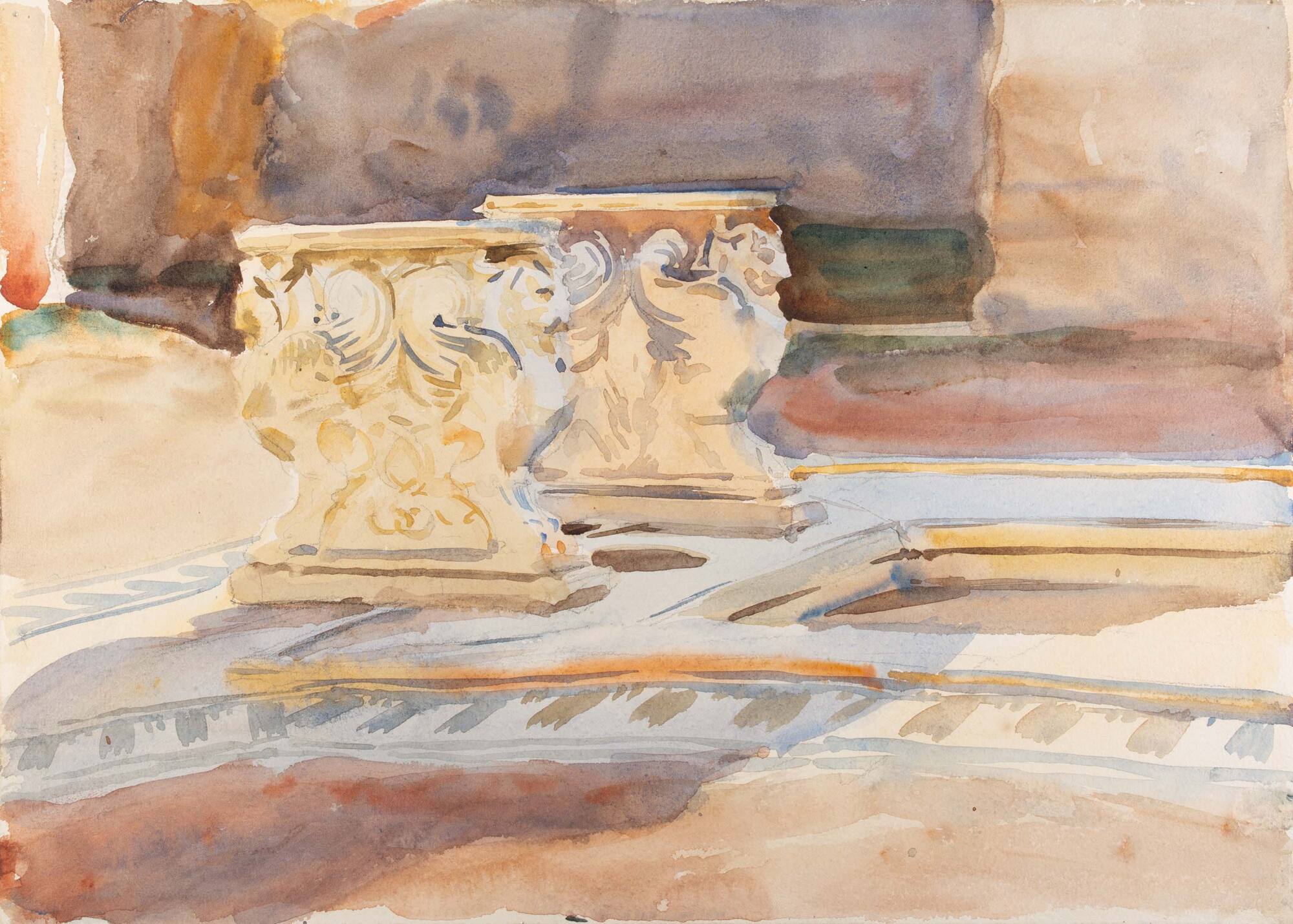
Object Details
Artist
John Singer Sargent
Date
1901
Medium
Watercolor on paper
Dimensions
Image: 9 3/4 × 13 3/4 inches (24.8 × 35 cm)
Credit Line
Acquired through the Ernest I. White, Class of 1893, Endowment Fund, supplemented by the Marcel K. Sessler, Class of 1913, Fund for the Belle Kleinert Sessler Collection
Object
Number
91.030
John Singer Sargent was born in Florence to American parents and often returned to Italy in search o(…)
John Singer Sargent was born in Florence to American parents and often returned to Italy in search of culture and Classical monuments. In this watercolor, Sargent took inspiration from the ruins of the House of Cornelius Rufus, a residence rediscovered during the excavations of Pompeii, and depicts a pair of marble table supports carved to resemble griffins.
Griffins are popular in Roman art, as demonstrated by their likeness in fresco and roof tile fragments. Scholars now believe that the griffin motif originated east of the Mediterranean, present in sites like Persepolis that long predate Pompeii. Pliny describes the defining features of the griffin (long ears and wings) and, citing the Greek historian Herodotus, locates griffins in the far north, where they supposedly unearth gold to be used for nesting, hence their symbolic functions as guardians of hidden treasures.
(Andrew C. Weislogel, “Wonder and Wakefulness: The Nature of Pliny the Elder,” exhibition organized by the Herbert F. Johnson Museum of Art, curated by Andrew C. Weislogel and Verity J. Platt, presented at the Johnson Museum January 21–June 11, 2023)












